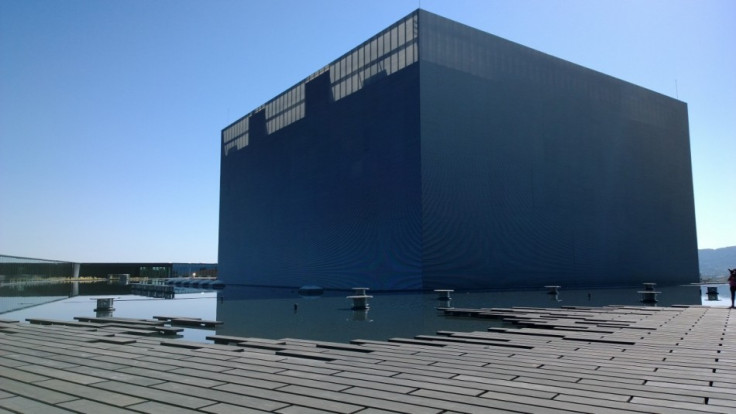Portugal Telecom Makes Statement of Intent with Data Centre Opening
Portugal Telecom marks the end of a five-year strategic investment programme with the opening of iconic data centre.

A mixture of Mecca's Kaaba and a top-secret NSA spying centre, Portugal Telecom's new black, cuboid data centre rises ominously at the foothills of the country's highest mountain range, and marks the end of a wide-ranging and expensive five-year investment programme in the company's telecoms and TV infrastructure.
Read more: How a data centre protects your information
The data centre has the potential to become the largest in Europe and one of the biggest in the world, but at the inauguration today, the company's CEO Zenial Bava cut the ribbon on the first of what could be four huge monolithic buildings which have the potential to store up to 50,000 servers or 30 petabytes of information.
The company told IBTimes UK that in order to create the largest data centre in Europe, it will need to sell the space in the first building before committing to build the other buildings which are in its plans.
The €90 million (£75m) investment will result in 1,400 jobs being created (400 directly and 1,000 indirectly) according to Bava and while security remains "the number one item on the agenda for everyone, including government" the CEO believes the company maintains the trust of its customers.
Contentious
Cloud storage is a very contentious issue at the moment following the revelation of widespread and systematic spying by intelligence agencies around the world on the information stored by people in the cloud.
However PT's chief technical officer, Jose Salas Pires, told IBTimes UK at the opening of the new facility that he was worried about the legislation which could be enacted as a result of the Edward Snowden leaks.

"Local laws will close countries on themselves, and for me it's a problem, as Portugal is too small for my project. We need to have international [business]" Pires said.
One of the countries to be affected by Snowden's revelations is Brazil, a country where PT has a major presence with its Oi brand.
Five year plan
The inauguration of the Covilha facility marks the end of five years of capital investment in PT's fixed line, fibre broadband, mobile network and data storage operations.
The opening of the data centre also marks a first for European operators, with Portugal Telecom now controlling the entire network from mobile phone to the facility where your photos, videos and files are stored in the cloud.
While some telecoms companies in South Korea and Singapore have a similar network in place, Portugal Telecom is leading the way in Europe.
Transformation cycle
This is the result of a decision taken five years ago to invest over 20% of capital expenditure (where typically the spend is between 10-12%) on what PT called a "technological transformation cycle."

It means that PT is now Portugal's leading telecoms company with a pay-TV service, a 100Gbps fibre network and 4G coverage which reaches 90% of the country.
PT chose the Covilha site from 25 other possible locations for three main reasons. First it is the only place in Portugal which gets snow in the winter and for nine months of the year is 'cold', meaning the data centre will require a lot less energy to cool the servers.
Location
Covilha is also one of the least likely places in Portugal to experience an earthquake, and finally PT has established a link with the local university (University of Beira Interior) to supply skilled workers for the facility - including the setting up of a university course specifically related to cloud computing.
At the inauguration Bava also spoke about the environmental credentials of the data centre, pointing out that it has a power usage effectiveness rating of just 1.2, meaning that for every one unit of power entering the data centre, it requires just 0.2 units to run the computer infrastructure within the centre.
The average rating for other data centres according to PT is 1.88.
PT has managed to bring its rating down by using a system called free-cooling, which means that PT hopes to have to use its chillers just six days out of the entire year.
© Copyright IBTimes 2025. All rights reserved.






















